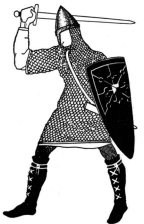Law Enforcement in the United States

History of Policing in the U.S. – Part One
This video offers a brief History of Policing in the United States from the earliest beginnings through Reconstruction. It is designed to encourage conversation between police and their communities, as well as serve as a resource for police education and training. The full version up to today will be available at www.policing.com on DVD in May 2007. Written, voiced and directed by Bonnie Bucqueroux, former associate director of the National Center for Community Policing at Michigan State and now with Policing.com.
The Evolution of American Policing: Written by Dan O. Sabath, FIrearms Editor
It is no secret that America inherited much of its governmental institutions from Great Britain. American law enforcement is no exception. British policing can be traced back to before the Norman Conquest of England in 1066. 
The first Europeans who landed on our shores, found a strange and wondrous new land, inhabited by strange and wondrous people. The newcomers had all they could do to establish themselves and to protect themselves from those who did not wish to share their land. Thus, policing was the responsibility of all able-bodied men, and, of course, young boys as well.
 After “things” got fairly well settled the job of maintaining order in the new colonies was given to Justices of the Peace, and one might see “culprits” in pillories or stocks, paying their debt to society. But, as colonies changed into towns and towns into cities, the Justice of the Peace system was not enough. It became time for an organized, and paid, police force.
After “things” got fairly well settled the job of maintaining order in the new colonies was given to Justices of the Peace, and one might see “culprits” in pillories or stocks, paying their debt to society. But, as colonies changed into towns and towns into cities, the Justice of the Peace system was not enough. It became time for an organized, and paid, police force.
In 1636 the city of Boston established Night Watch, which idea worked reasonably well as long as the area remained a rural and agrarian one. New York City established the Shout and Rattle Watch in 1651, but, by 1705 Philadelphia found it necessary to divide the city into ten patrol areas.
In the almost 100 years between the Revolutionary and Civil Wars, the more than rapid growth of population and industrialization in America mandated the development of municipal police departments. In 1833, Philadelphia organized an independent, 24 hour a day, police force. In 1844, New York City  had two police forces; daytime duty and the night watch. During this period, police departments were headed by police chiefs, appointed and accountable to political bosses. Corruption was commonplace.
had two police forces; daytime duty and the night watch. During this period, police departments were headed by police chiefs, appointed and accountable to political bosses. Corruption was commonplace.
Part of the inherited law enforcement was the Sheriff system. (Remember the dastardly Sheriff of Nottingham from Robin Hood?) As America moved toward the west, in most frontier towns the Sheriff was the chief law enforcement official. He could be recruited from the local community, or more often a Sheriff was selected by his reputation, and not always a savory one. The Sheriff system still exists today, but, on a more formal and politicized basis.
Todays law enforcement agencies and departments are highly specialized organizations, with ongoing training to prepare to meet a great variety of problems and situations. Today we have federal, state, county, and municipal police. The world, our world, has gotten to be a most dangerous place, and we all are dependent on peace officers from every organization for our” life, liberty and the pursuit of happiness.”
Pentagon Channel feature History of Coast Guard Maritime Law Enforcement
The Pentagon Channel’s part 2 of 3 feature on the Coast Guard maritime law enforcement mission.
History
The Coast Guard officially established the Law Enforcement Detachment program in 1982. The first LEDETs operated directly under Coast Guard groups and districts, where they served as law enforcement specialists, conducting training and local operations. In 1986, Public Law (P.L.) 99-570 specifically authorized the establishment of billets for active duty Coast Guard personnel to carry out drug interdiction operations from naval surface vessels provided by the Department of Defense(DoD). Since the Posse Comitatus Act and department policy strictly prohibit Department of Defense personnel from directly engaging in law enforcement activities, LEDETs were tasked with operating aboard United States Navy (USN) ships to investigate contacts and conduct boardings in accordance with Coast Guard policy and directives. In accordance with P.L. 99-570, LEDETs were to deploy aboard U.S. Navy “ships of opportunity”, transiting or operating in areas frequently used by illegal drug traffickers. In 1988, P.L. 100-456 made it a requirement that Coast Guard law enforcement personnel be assigned to each appropriate Navy surface vessel that transits a drug interdiction area.
The 1989 National Defense Authorization Act designated the DoD as the lead agency of the Federal Government for the detection and monitoring of aerial and maritime trafficking of illegal drugs into the United States or any of its commonwealths, territories, or possessions. In turn, the Coast Guard was designated the lead agency for the interdiction and apprehension of illegal drug traffickers on the high seas. In order to meet these statutory responsibilities, the DoD began deploying surface assets to drug interdiction areas, making ships available for direct support of Coast Guard law enforcement operations.
In the 1990s, the individual LEDETs were consolidated under three Tactical Law Enforcement Teams (TACELTs): Tactical Law Enforcement Team North (TACLET North) based in Chesapeake, Virginia, Tactical Law Enforcement Team South (TACLET South), based in Opa-locka, Florida, and the Pacific Area Tactical Law Enforcement Team (PACTACLET) based in San Diego, California.[4] In 2004, TACLET North was decommissioned and merged with Maritime Safety and Security Team 91102 to form a new counter-terrorism unit which was eventually named the Maritime Security Response Team (MSRT).
In July 2007, the Tactical Law Enforcement Teams and Law Enforcement Detachments became part of the Coast Guard’s new Deployable Operations Group (DOG) in an effort to organize the Coast Guard’s various deployable specialized force under a single command.
http://www.aphf.org/hist.html

